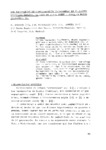Mostrar o rexistro simple do ítem
Los yacimientos de cuarzo-apatito (fosforita) en el Macizo Hespérico español: el caso de Aldea Moret - Zarza la Mayor (Cáceres). II
| dc.contributor.author | Rambaud, F. | |
| dc.contributor.author | Caraballo, J. M. | |
| dc.contributor.author | Barrera, J. L. | |
| dc.date.accessioned | 2010-01-25T09:32:27Z | |
| dc.date.available | 2010-01-25T09:32:27Z | |
| dc.date.issued | 1983 | |
| dc.identifier.citation | Cadernos do Laboratorio Xeolóxico de Laxe, 1983, 6: 409-413 ISBN: 84-7492-204-6 | es_ES |
| dc.identifier.isbn | 84-7492-204-6 | |
| dc.identifier.uri | http://hdl.handle.net/2183/6358 | |
| dc.description.abstract | [Resumen] De muy variadas hipótesis, desde magmatogénicas a meteóricas, se concluye con un origen magmatogénico hidroterma1 de alta T. Por otra parte no existe un fondo geoquímico elevado en P, sino que es la presencia de minera1izadores como el F que concentra el P (un elemento minera1izante también) en un modelo halogénico | |
| dc.description.abstract | [Abstract] Of very different hypothes from magmatognic to meteoric, an hydroterma1 magmatognic origen of high T is conc1uded. On the other hand, there aren't high geochemica1 background in P, but is the minera1izing elements just 1ike F that concentrate P (a minera1izing e1ement a1so) in an hall Q genic mode1. | |
| dc.language.iso | spa | es_ES |
| dc.publisher | Universidade da Coruña | es_ES |
| dc.title | Los yacimientos de cuarzo-apatito (fosforita) en el Macizo Hespérico español: el caso de Aldea Moret - Zarza la Mayor (Cáceres). II | es_ES |
| dc.type | info:eu-repo/semantics/article | es_ES |
| dc.rights.access | info:eu-repo/semantics/openAccess |






